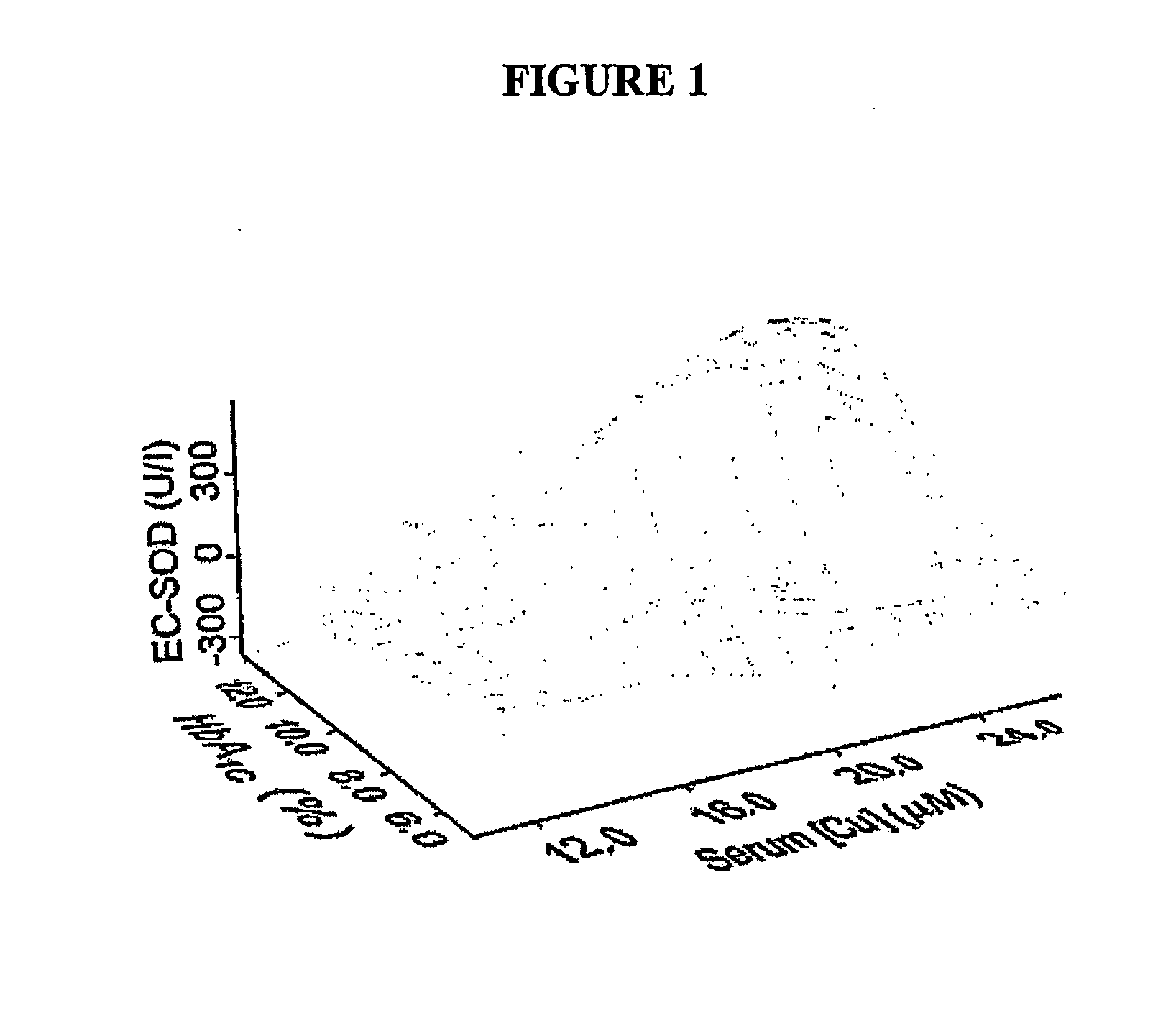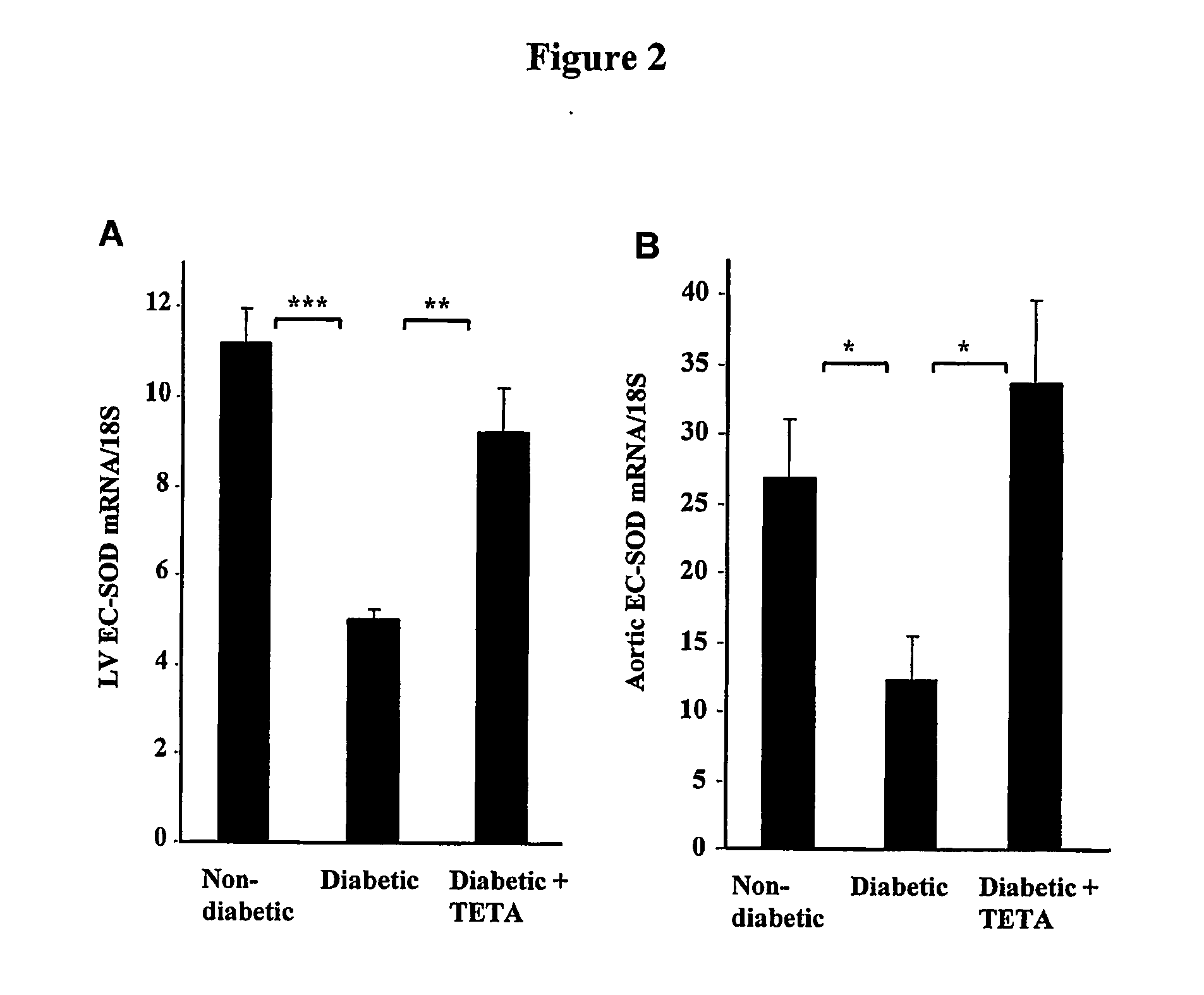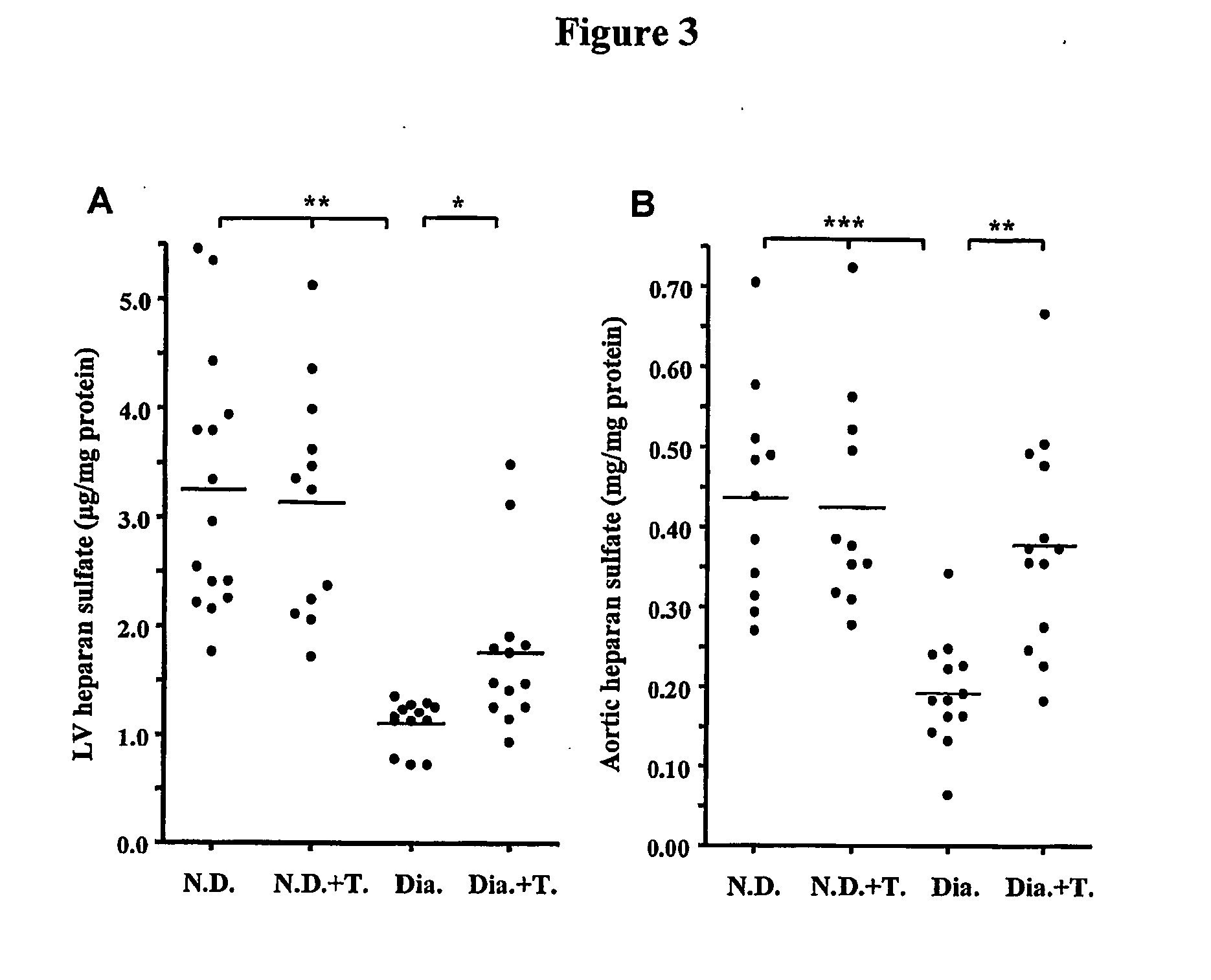Copper regulation evaluation and therapy
a technology of copper regulation and evaluation, applied in the field of compounds, can solve the problems of -cell failure, relative or absolute deficiency of insulin, limited capacity to provide long-term glycemic control, etc., and achieve the effect of increasing the level of heparan sulfa
- Summary
- Abstract
- Description
- Claims
- Application Information
AI Technical Summary
Benefits of technology
Problems solved by technology
Method used
Image
Examples
example 1
[0217]Regulatory and human ethics approvals. Protocols incorporating experimental administration of triethylenetetramine dihydrochloride (trientine) to human subjects were approved in New Zealand by the Standing Committee on Therapeutic Trials (SCOTT), and by the Auckland Human Ethics Committee. All subjects provided written informed consent to participate.
[0218]Subjects. Male subjects aged 30-70 years with a normal ECG were recruited into this trial. Diabetic subjects were included if they were more than six months post type 2 diabetes diagnosis, and age-matched healthy control subjects were included on the basis of normal glucose tolerance established by standard oral glucose tolerance tests. Exclusion criteria included: confirmed diagnosis of T1DM; nephropathy (urine albumin>300 mg / 1, [creatinine]serum>110 μM); abnormal hematology (hemoglobin9 / l) or Fe deficiency anemia ([Fe]serumserum<20 μg / l); history of significant cardiac disease; previous hepatic, gastrointestinal or other e...
example 2
[0224]Dose-dependent effects of trientine on urinary metal excretion. We also performed a substudy to characterise dose-dependent effects of trientine on urinary excretion of Cu, Fe, Zn and the six other trace elements in people with or without type 2 diabetes, at and below the dose-range (1200 to 2400 mg / day) previously recommended for treatment of patients with Wilson's disease. Increasing doses of trientine (in mg / day: 300, 600, 1200 and 2400) were successively administered in an unblinded study for 1-week periods with 6-weeks washout between each dose. Blood and urine samples were collected before and after each 1-week treatment period. Subjects were 7 non-diabetic controls and 7 patients with type 2 diabetes who had completed the elemental balance study and agreed to participate in the substudy. A history, physical examination and safety laboratory tests (as above) were performed prior to each medication cycle, to confirm that the participants continued to meet all inclusion / ex...
example 3
[0242]This Example describes the measurement of free copper in serum and urine. Trace metal cleaned plastic ware (polyethylene, polypropylene, or Teflon) is used for all steps of the experiments: bottles are soaked in 10% HCl for >24 h, rinsed with ultrapure water (Barnstead NANOpure Diamond, Dubuque, Iowa), stored filled with 0.1% HCl, and then rinsed again with ultrapure water before use. To minimize the potential for Cu contamination, most of the sample handling is conducted on a Class 100 clean bench.
[0243]The gellyfish sampler (GFbeads) consists of iminodiacetate cation-exchange resin beads (Toyopearl AF-Chelate 650M, TosoHaas Biosep LLC; Montgomeryville, Pa.) embedded in a polyacrylamide gel matrix (modified from ref 29). The resin beads (hereafter referred to as beads) are shipped suspended in 20% methanol, with a mean bead size of 65 μm. The concentration of iminodiacetate groups is approximately 18 μmol per ml of resin slurry. Because of rapid gelling of the matrix, 5 mL ba...
PUM
 Login to View More
Login to View More Abstract
Description
Claims
Application Information
 Login to View More
Login to View More - R&D
- Intellectual Property
- Life Sciences
- Materials
- Tech Scout
- Unparalleled Data Quality
- Higher Quality Content
- 60% Fewer Hallucinations
Browse by: Latest US Patents, China's latest patents, Technical Efficacy Thesaurus, Application Domain, Technology Topic, Popular Technical Reports.
© 2025 PatSnap. All rights reserved.Legal|Privacy policy|Modern Slavery Act Transparency Statement|Sitemap|About US| Contact US: help@patsnap.com



